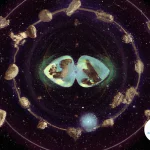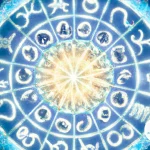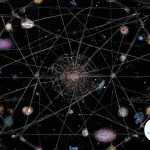Welcome to the cosmic realm of astrology, where the movements of the celestial bodies hold profound significance for our lives on Earth. Have you ever wondered about the intricate connections between the stars and our individual existence? Look no further, as we delve into the fascinating realm of astrological aspects and their role in unlocking these cosmic connections. Astrological aspects are powerful angles formed between planets, offering insights into our personality traits, relationships, and life events. In this comprehensive guide, we will explore the different types of aspects, their interpretation, and their influence on our lives. So get ready to embark on a journey of self-discovery and cosmic understanding as we unravel the mysteries of the stars!
What are Aspects in Astrology?

Aspects are an essential component of astrology that helps astrologers examine the relationships and connections between celestial bodies. They represent the angles formed between planets and other significant points on an astrological chart, such as the Ascendant or Midheaven. These aspects hold immense significance as they reveal the dynamic interplay of energies and influences between the different celestial bodies. By analyzing these angles, astrologers gain insights into the unique qualities and potentials of an individual’s life. Aspects can be seen as lines that connect planets and points, forming a web-like pattern that defines the energetic dynamics at play in a person’s chart.
To better understand aspects, let’s take a closer look at some of the fundamental types:
Conjunctions: A conjunction occurs when two or more planets align closely together. This aspect creates a potent merging of energies, intensifying the influence of the combined planets.
Oppositions: Oppositions occur when two planets are directly opposite each other in the astrological chart. This aspect signifies a tension or polarity between the energies represented by the planets involved.
Trines: Trines occur when two planets form a harmonious angle of approximately 120 degrees. This aspect indicates a flow of positive energy and cooperation between the planets.
Squares: Squares are angles of approximately 90 degrees formed between two planets. This aspect represents a challenging and dynamic energy, often associated with tension, conflict, and the need for growth and change.
Sextiles: Sextiles occur when two planets form an angle of approximately 60 degrees. This aspect signifies potential opportunities and harmonious connections between the planets involved.
Quincunxes: Quincunxes, also known as inconjuncts, occur when two planets are approximately 150 degrees apart. This aspect brings a sense of tension and adjustment, requiring adaptability and flexibility.
These are just a glimpse of the various aspects that astrologers analyze to understand the intricate web of energies in an individual’s chart. Each aspect holds its own unique qualities and significance, contributing to the overall interpretation of a person’s astrological makeup. By understanding the aspects in your chart, you can gain deeper insights into your personality traits, life events, and potential paths for growth and fulfillment. So, let’s continue on this cosmic journey as we explore the interpretation and influences of these fascinating aspects in astrology.
The Different Types of Aspects
Astrology encompasses a fascinating array of aspects, each providing valuable insights into the cosmic connections between celestial bodies. These aspects play a pivotal role in understanding the intricate dynamics within astrological charts. Let’s explore the different types of aspects that astrologers analyze in depth. Conjunctions reveal the merging energies of planets, intensifying their influence. Oppositions signify tension and polarity between planets. Trines bring forth harmonious energy and cooperation. Squares represent dynamic energy and the need for growth. Sextiles suggest potential opportunities and harmonious connections. Quincunxes require adaptability and flexibility. Understanding the nuances and qualities of each aspect brings us closer to unraveling the cosmic tapestry of astrology, paving the way for deeper self-awareness and growth. So, let us delve further into the interpretation and influences of these mystical aspects.
1. Conjunctions
A conjunction is a powerful aspect in astrology that occurs when two or more planets align closely together. This alignment creates a fusion of energies, resulting in a strong and intense influence on the individual. Conjunctions can greatly impact a person’s personality traits, life events, and areas of focus. Here are some key points to understand about conjunctions:
1. Planetary Alignment: In a conjunction, planets align within a close proximity, typically within 10 degrees of each other. The closer the alignment, the stronger the influence of the conjunction.
2. Amplification of Energy: Conjunctions amplify the energies of the involved planets, merging their qualities and intensifying their effects. This can manifest as heightened emotions, increased drive, or a stronger focus on specific areas of life.
3. Blurring of Boundaries: When planets are in conjunction, their energies blend together, blurring the boundaries between them. This can create unique combinations of traits and attributes in a person’s personality or circumstances.
4. Fusion of Themes: Conjunctions bring together the themes associated with the involved planets. For example, a conjunction between Venus and Mars combines the energies of love, harmony, and desire, creating a passionate and charismatic individual.
5. Impact on Natal Chart Houses: The house placement of the conjunction plays a significant role in determining the area of life where its influence is most prominently felt. For instance, a conjunction occurring in the 10th house may greatly impact an individual’s career and public image.
6. Positive and Challenging Conjunctions: The nature of a conjunction can be either positive or challenging, depending on the planets involved and the overall dynamics of the chart. Benefic planets like Venus or Jupiter in conjunction can bring blessings and opportunities, while malefic planets like Saturn or Mars in conjunction may present obstacles and difficulties.
7. Personal Growth and Expression: Conjunctions can offer a pathway for personal growth and self-expression. They indicate areas where an individual can cultivate their strengths, explore their passions, and work towards their goals and aspirations.
Understanding the influence and interpretation of conjunctions is crucial in gaining a deeper understanding of an individual’s astrological makeup. By examining the specific planets involved, their house placement, and the overall dynamics of the chart, astrologers can provide valuable insights into an individual’s personality, life events, and potential paths for growth and fulfillment. So, embrace the power of conjunctions and discover the cosmic dance of energies that shape your unique astrological blueprint.
2. Oppositions
Oppositions in astrology occur when two planets are directly opposite each other in the astrological chart, creating an angle of approximately 180 degrees. This aspect represents a tension or polarity between the energies and qualities associated with the planets involved. When interpreting oppositions, astrologers look at the contrasting qualities and themes represented by the planets to gain deeper insights into a person’s life dynamics.
Here are some key points to understand about oppositions:
1. Balancing Act: Oppositions bring a dynamic interplay of energies that often require balancing and integration. The planets involved may represent opposing forces or traits within a person’s personality or external circumstances. For example, the opposition between the Sun and the Moon might signify a conflict between one’s ego and emotions, calling for the development of a harmonious balance.
2. Relationship Focus: Oppositions are particularly significant when they occur between planets that represent key relationships in a person’s chart, such as the Sun and the Moon, or Venus and Mars. These oppositions may indicate contrasting needs and desires within relationships, leading to a deeper understanding of the challenges and growth potential in partnerships.
3. Inner Conflict and Resolution: Oppositions often manifest as inner conflicts or challenges that push individuals towards growth and self-awareness. By recognizing and integrating the opposing energies within themselves, individuals can find resolution and personal growth. For instance, an opposition between Saturn and Uranus may represent a tension between stability and freedom, prompting one to find a balance between structure and innovation.
4. Areas of Life: Oppositions can also highlight specific areas of life where the tensions and polarities are most pronounced. For example, if an opposition occurs between the 2nd and 8th house cusps, it may indicate a struggle between personal values and shared resources or financial matters.
5. Growth and Awareness: While oppositions can create challenges, they also offer opportunities for growth and awareness. The tension and contrast provided by this aspect can lead to a deeper understanding of oneself and others, creating room for personal development and transformation.
It’s important to note that oppositions are not inherently negative or positive; they simply reflect the contrasting energies at play. Understanding the dynamics of oppositions in your astrological chart can provide valuable insights into areas of tension, challenges, and potential growth in your life. So embrace the dance of opposites and discover the hidden harmonies within as we continue our exploration of astrological aspects.
3. Trines
Trines are a powerful aspect in astrology that represents a harmonious and supportive connection between two planets. When two planets form a trine aspect, they are approximately 120 degrees apart on the astrological chart. This aspect is considered highly favorable because it promotes ease, flow, and cooperation between the energies of the planets involved.
Trines signify a natural affinity and understanding between the planets, allowing them to work together effortlessly. The energy created by trines is often described as smooth and beneficial, as it encourages the planets to collaborate and express their strengths in a harmonious way. This aspect promotes a sense of balance, creativity, and inspiration, enabling individuals to tap into their innate talents and abilities.
Trines are known for their positive influence on various aspects of life. For example, a trine between the Sun and Moon in a natal chart can enhance emotional well-being and self-expression. It can bring a sense of alignment between one’s identity (Sun) and emotions (Moon), allowing for a smoother integration of these aspects of self.
Trines also play a significant role in relationships and compatibility. When two individuals have trine aspects between their personal planets, such as Sun trine Venus or Mars trine Jupiter, it indicates a natural sense of affinity and understanding between them. This harmonious connection can create a strong foundation for a long-lasting and fulfilling partnership.
In the realm of career and success, trines can indicate a flow of positive energy, enhancing one’s natural abilities and talents. For example, a trine between Mercury and Uranus can enhance communication skills and innovative thinking, making professions in writing, teaching, or technology a natural fit for individuals with this aspect.
Trines also serve as powerful sources of support during challenging times. When facing obstacles or difficulties, the harmonious energy of a trine aspect can provide a sense of ease and assistance. It can help individuals find creative solutions and navigate through challenging situations with greater grace and resilience.
Trines are a beneficial aspect in astrology that foster harmony, creativity, and support. They enhance various areas of life, including self-expression, relationships, career, and overcoming challenges. By understanding and embracing the energy of trines in your astrological chart, you can harness their positive influence and unlock your full potential. So, let’s continue our cosmic exploration and discover more about the intriguing aspects in astrology.
4. Squares
Squares: Squares are angles of approximately 90 degrees formed between two planets. This aspect signifies a powerful and dynamic energy within astrology. When two planets form a square aspect, they create a challenging and often tense relationship. The energy between these planets is intense, and there is a natural conflict and friction that arises.
In a square aspect, the planets involved are in signs that have different elemental qualities. For example, a square may occur between a planet in a fire sign and another planet in a water sign. Fire and water have opposing and contrasting energies, which can lead to inner tension and external challenges.
Squares represent areas of growth, as they push individuals to confront and overcome obstacles. The energy of a square aspect can be disruptive, yet it also carries valuable lessons and opportunities for personal development.
For instance, a square aspect between Mars and Saturn indicates a conflict between one’s assertiveness (Mars) and sense of structure and discipline (Saturn). This can manifest as inner struggles with authority, managing anger, or finding a balance between ambition and caution.
Understanding the impact of squares in your natal chart can provide valuable insights into areas where you may encounter challenges and the inner resources required to navigate them. These aspects are often associated with areas of life where personal growth is necessary, pushing you to step outside your comfort zone and take action towards resolution.
It’s important to note that while squares can generate tension and difficulties, they also serve as catalysts for personal growth and transformation. They provide the opportunity to develop resilience, inner strength, and problem-solving skills. By addressing the challenges presented by square aspects, individuals can harness their energy and find creative and constructive ways to work through obstacles.
In our continued exploration of aspects, we will now move on to discuss another intriguing aspect in astrology: the role of astrological houses in spirituality and the inner self.
5. Sextiles
Sextiles are a significant aspect in astrology that represents a harmonious connection between two planets. When two planets form a sextile, they are approximately 60 degrees apart. This angle creates a flow of positive energy and opportunity, enhancing cooperation and easy communication between the planets involved.
Sextiles provide a natural affinity and supportive energy, enabling the planets to work together effectively towards a common goal. This aspect encourages growth, creativity, and the exploration of new possibilities. It combines the qualities of the planets involved, fostering a sense of balance and integration.
When analyzing a sextile in an astrological chart, astrologers consider the specific planets involved and their corresponding energies. For example, a sextile between the Moon and Venus can enhance emotional expression, creativity, and nurturing connections in relationships. It may indicate an individual’s ability to empathize and create harmonious relationships based on emotional understanding.
Sextiles offer a gentle and flowing energy, making it easier to explore new opportunities and navigate obstacles. They can act as catalysts for growth and provide supportive influences in various areas of life, such as career, relationships, and personal development.
In career matters, a sextile between the Sun and Jupiter may indicate opportunities for success and expansion. This aspect can bring positive energy, luck, and a sense of optimism, leading to favorable outcomes in professional endeavors. It may also signify a person’s ability to harness their strengths and achieve their goals with ease.
In relationships, a sextile between Venus and Mars can indicate an easy flow of passion, desire, and attraction. This aspect suggests a natural compatibility and harmony between these planetary energies, fostering a stimulating and dynamic connection between partners. It can signify a relationship built on mutual understanding and shared values.
Ultimately, a sextile between planets signifies a favorable connection and potential for growth in various aspects of life. It is an aspect that invites opportunity, cooperation, and a smooth flow of energies. By understanding the influences of sextiles in your astrological chart, you can tap into the inherent potential and make the most of the harmonious connections presented to you.
So, whether it’s incorporating Taurus energy tips for grounding and stability or making informed decisions about the best career choices based on your zodiac sign, exploring the sextiles in your chart can provide valuable insights and guide you towards a more harmonious and fulfilled life.
6. Quincunxes
Quincunxes, also known as inconjuncts, are intriguing and complex aspects in astrology that occur when two planets are approximately 150 degrees apart. This angular relationship creates a sense of tension and challenge, as the energies of the planets involved do not naturally blend or align. Here are some key points to understand about quincunxes:
1. Conflicting Energies: Quincunxes indicate a clash or “blind spot” between the planets involved. The energies of these planets seem incompatible, making it difficult for them to work together harmoniously.
2. Adjustment and Adaptability: Quincunxes require individuals to make adjustments and adapt to the conflicting energies. This aspect calls for flexibility, as finding balance and integration between the planets can be challenging.
3. Mental and Emotional Tension: Quincunxes often manifest as a mental and emotional struggle. There may be a feeling of being caught between two different areas of life or conflicting desires, causing inner tension and frustration.
4. Problem-Solving Potential: Despite the initial challenges, quincunxes also offer opportunities for growth and problem-solving. They challenge individuals to find creative and innovative solutions to bridge the gap between the conflicting energies.
5. Areas of Life: The specific areas of life impacted by quincunxes depend on the planets involved and the houses they occupy in the astrological chart. The houses affected by quincunxes highlight the particular life areas where adjustment and adaptation are required.
6. Personal Growth and Integration: Quincunxes often highlight areas of personal growth and self-improvement. They push individuals to integrate and reconcile seemingly conflicting aspects of their personality or life circumstances.
7. Opportunity for Balance: Successfully navigating quincunxes can lead to a sense of balance and wholeness. When individuals learn to embrace and harmonize the conflicting energies, they can unlock a deeper level of self-awareness and personal integration.
Remember that the interpretation of quincunxes is highly individual and depends on the specific planets, signs, and houses involved in the aspect. A thorough analysis of the natal chart by an experienced astrologer is necessary to fully understand the implications of quincunxes and how they contribute to an individual’s unique astrological profile. So, embrace the challenges and opportunities presented by quincunxes as you continue to explore the fascinating world of astrological aspects.
Interpreting Aspects
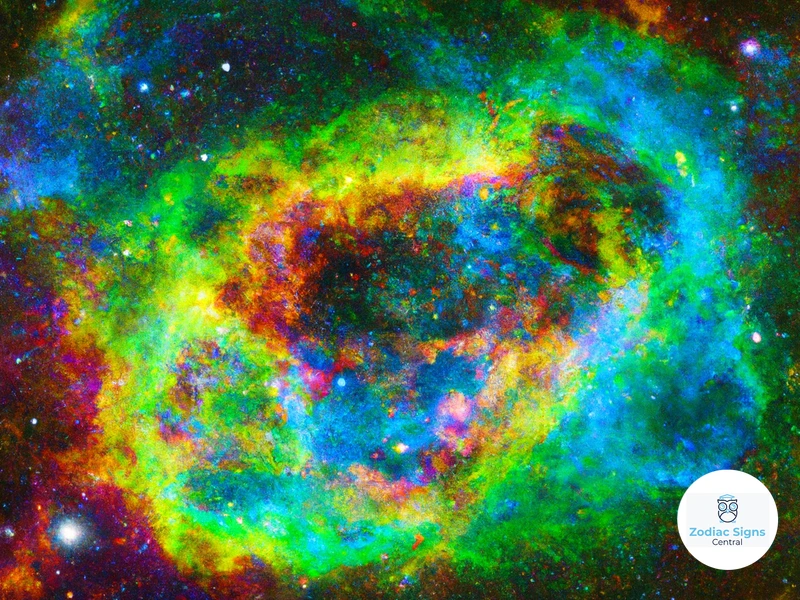
Interpreting aspects in astrology is a skill that requires a deep understanding of the dynamic relationships between celestial bodies. Astrologers carefully analyze the strength and orb of each aspect to determine its significance and influence. The strength of an aspect refers to how closely it aligns with the exact degree and minute of the aspect, while the orb represents the allowable margin of difference. A tight orb indicates a strong and potent aspect, whereas a wider orb suggests a weaker influence. The interpretation of aspects also considers whether they are harmonious or challenging. Harmonious aspects, such as trines and sextiles, indicate ease and flow in the energies between planets, while challenging aspects like squares and oppositions bring tension and growth opportunities. Major aspects, such as conjunctions and oppositions, carry stronger influences, while minor aspects, like quincunxes, offer more subtle nuances. By understanding these factors and the specific qualities of each aspect, astrologers can unlock the hidden messages and cosmic connections within a birth chart.
1. Strength and Orb
- Strength and Orb: When interpreting astrological aspects, two important factors to consider are the strength and orb of the aspect. The strength of an aspect refers to how potent and influential the connection between two planets or points is. A strong aspect indicates a more pronounced and noticeable impact on the individual’s life. The strength of an aspect can be determined by the proximity of the planets within the aspect, as well as their overall significance in the chart. Planets that are closely aligned within an aspect are considered stronger and have a more powerful influence. Additionally, the nature and dignity of the planets involved contribute to the strength of the aspect. For example, a conjunction involving the Sun, representing the individual’s core identity, would have a significant impact on their personality and life path.
The orb of an aspect, on the other hand, refers to the allowable degree of separation between the planets for the aspect to be considered valid. A tighter orb indicates a more potent and strong influence, while a wider orb suggests a weaker and more subtle impact. The orb is subjective and can vary depending on the astrologer’s preferences and the specific aspect being analyzed. Generally, a tighter orb is used for major aspects like the conjunction, opposition, and square, while a wider orb is accepted for minor aspects like the trine and sextile.
Both the strength and orb of an aspect weigh heavily in its interpretation. A strong aspect with a tight orb signifies a significant and impactful influence in the individual’s life, while a weak aspect with a wider orb may have a more subtle and nuanced effect. It is important to consider these factors when analyzing aspects in a natal chart or forecasting future events using transits. By understanding the strength and orb of aspects, astrologers can provide a more comprehensive and accurate interpretation of the celestial connections in an individual’s life.
2. Harmonious and Challenging Aspects
Harmonious and challenging aspects play a crucial role in the interpretation of astrological charts. They indicate the nature of the relationship between planets and provide insights into how their energies interact.
Harmonious aspects are those that create a sense of ease, flow, and positive energy between planets. These aspects facilitate the integration of the planets’ energies, promoting cooperation, balance, and synergy. The most common harmonious aspects include trines and sextiles. Trines, with their 120-degree angle, signify a natural affinity and harmony between the planets involved. They often indicate talents, opportunities, and areas of ease in one’s life. Sextiles, on the other hand, create a flow of harmonious energy through their 60-degree angle. They bring a sense of cooperation and opportunities for growth.
On the other side of the spectrum, we have challenging aspects that indicate areas of tension, obstacles, and potential growth opportunities. Squares and oppositions are the primary challenging aspects in astrology. Squares, with their 90-degree angle, represent internal conflicts, frustrations, and the need for adjustments. They often bring about challenges and require conscious effort to be overcome. Oppositions occur when two planets are directly opposite each other, creating tension and polarity. This brings awareness to the contrasting energies being expressed and often results in a need for balance and integration.
Both harmonious and challenging aspects provide valuable insights into an individual’s astrological makeup. Harmonious aspects offer a sense of natural talents, ease, and areas of support in life. They can be seen as strengths that can be utilized to their fullest potential. Challenging aspects, on the other hand, highlight areas of growth, learning, and potential obstacles. While they may present difficulties, they also offer opportunities for personal development and transformation.
It’s important to remember that no aspect is inherently good or bad. Each aspect serves a purpose within an individual’s journey and contributes to their overall growth and evolution. By understanding and working with both harmonious and challenging aspects, one can navigate through life with greater self-awareness, resilience, and a deeper understanding of the cosmic energies at play.
3. Major and Minor Aspects
When exploring aspects in astrology, it’s essential to distinguish between major and minor aspects. Major aspects are the key angles that astrologers consider when interpreting a chart, as they have a significant impact on the overall dynamics and themes of an individual’s life. Here are some of the major aspects:
Conjunction: A conjunction is a major aspect that occurs when two or more planets align closely together. It signifies a merging and amplification of energies between the planets involved.
Opposition: The opposition is another crucial major aspect formed when two planets are directly opposite each other in the chart. This aspect represents a polarity and often brings about a tension or balancing act between the energies represented by the planets.
Trine: The trine is a harmonious major aspect that occurs when two planets form an angle of approximately 120 degrees. This aspect signifies a flow of positive energy and cooperation between the planets, creating ease and supportive influences.
Square: The square is a challenging major aspect formed when two planets are approximately 90 degrees apart. It represents tension, conflict, and the need for growth and transformation. Squares push individuals to confront obstacles and make necessary changes in their lives.
These major aspects serve as the foundation for understanding the core dynamics of an astrological chart. However, there are also minor aspects that add nuances and subtleties to the interpretation. While not as influential as the major ones, they offer additional insights and shades of meaning. Here are some examples of minor aspects:
Sextile: The sextile is a minor aspect formed when two planets are approximately 60 degrees apart. It represents opportunities, creative potentials, and harmonious connections. Sextiles offer a supportive boost that can help individuals manifest their goals.
Quincunx: The quincunx, also known as the inconjunct, is a minor aspect formed when two planets are approximately 150 degrees apart. This aspect brings a sense of tension and requires adjustment and adaptability. Quincunxes often prompt individuals to make subtle changes and find innovative solutions.
While major aspects play a significant role in shaping a person’s character and life events, minor aspects provide additional layers of interpretation and complexity. Astrologers consider both major and minor aspects together to offer a holistic understanding of an individual’s astrological makeup. By examining this interplay, astrologers can provide detailed insights into the various influences and potential scenarios in a person’s life. So, let’s continue our exploration of aspects in astrology as we unravel the fascinating connections between celestial energies and human existence.
The Influence of Aspects on Personality Traits and Life Events
Astrological aspects play a pivotal role in shaping our personality traits and influencing the events that unfold in our lives. By examining the connections between celestial bodies in our astrological chart, astrologers can gain profound insights into the energies at play within us. These aspects provide a deeper understanding of our identity and self-expression, highlighting our strengths, challenges, and potential for growth. The influence of aspects extends beyond our internal landscape and extends to our relationships and compatibility with others. By analyzing the aspects between two individuals’ charts, astrologers can uncover the dynamics that bring people together or create tension and challenges. Aspects shed light on our career paths and success, offering guidance and insights into our natural abilities and areas where we may face obstacles. Whether we encounter difficulties or opportunities, the aspects in our chart provide clues to navigate through life’s challenges and capitalize on our strengths. So, let us explore the profound impact of aspects and how they shape our personality traits and life events.
1. Identity and Self-Expression
1. Identity and Self-Expression
In astrology, aspects play a significant role in shaping one’s identity and self-expression. The aspects formed between planets in an individual’s natal chart reveal how their energy and personality manifest in the world. These aspects provide insights into personal strengths, talents, and tendencies, as well as potential challenges and growth opportunities.
For example, a conjunction between the Sun and Mercury can enhance communication skills and intellectual abilities, allowing individuals to express themselves clearly and effectively. On the other hand, a square aspect between the Sun and Pluto may indicate a need for transformation and empowerment in expressing one’s true identity, as well as overcoming power struggles or deep-seated fears.
Trines can also greatly influence self-expression. For instance, a trine between Venus and Mars can indicate a harmonious balance between passion and creativity, leading to a natural charm and magnetism. Sextiles, too, can contribute to self-expression, such as a sextile between the Moon and Uranus, which may foster originality, emotional intelligence, and a unique personal style.
However, aspects can also present challenges to self-expression. A square between the Moon and Saturn may indicate a sense of insecurity or emotional restrictions, requiring individuals to work on developing self-confidence and emotional resilience. Quincunxes, with their inherent tension, can bring a need for adjustment and adaptation in expressing one’s identity, such as a quincunx between Mars and Neptune, which may require balancing assertiveness with compassion and sensitivity.
Understanding the aspects in relation to identity and self-expression empowers individuals to embrace their strengths and navigate their challenges. By recognizing their unique energetic patterns and learning to integrate the diverse aspects within themselves, individuals can cultivate authenticity, self-awareness, and a more fulfilling expression of their true selves. So, let’s continue our exploration of the fascinating role of aspects in astrology and how they influence other areas of life.
2. Relationships and Compatibility
When it comes to relationships and compatibility in astrology, the role of aspects cannot be overstated. Aspects between the planets in a natal chart provide valuable insights into the dynamics and potential challenges within a romantic or platonic connection.
Let’s explore some key aspects and their impact on relationships:
Conjunction: A conjunction between two people’s planets signifies a strong connection and a merging of energies. It can create an intense bond and a sense of unity between individuals. However, the nature of the planets involved will determine whether this connection is harmonious or challenging.
Opposition: An opposition aspect can indicate a relationship characterized by polarity and tension. The planets involved may have contrasting qualities, which can lead to power struggles or a push-pull dynamic. However, with understanding and compromise, oppositions can also provide an opportunity for growth and integration.
Trine: Trine aspects between planets in two individuals’ charts signify a harmonious and supportive connection. There is a natural ease and compatibility between the partners, with shared values and understanding. This aspect can contribute to a sense of flow and mutual support in a relationship.
Square: Squares between planets in a relationship often bring challenges and potential conflicts. The energies represented by the planets may clash, leading to differences in values, communication styles, or goals. However, these challenges also provide an opportunity for growth and learning if both partners are willing to work through them.
Sextile: Sextile aspects in relationship charts indicate a connection characterized by ease and opportunity. There is compatibility and a natural affinity between the partners, with an intuitive understanding of each other. This aspect can facilitate open communication and cooperation.
Quincunx: Quincunx, also known as inconjunct aspects, bring a sense of adjustment and imbalance in a relationship. The planets involved may have differing needs and priorities, requiring both partners to adapt and find a middle ground. This aspect challenges the individuals to be flexible and understanding.
By analyzing the aspects between planets in a relationship chart, astrologers can provide valuable insights into the dynamics at play. These aspects shape the compatibility and interactions between individuals, highlighting both the strengths and potential areas of tension within the relationship. Understanding these aspects can help partners navigate challenges, capitalize on their strengths, and cultivate a harmonious and fulfilling connection. So whether you’re exploring a romantic partnership or seeking to enhance an existing relationship, examining the aspects in your relationship chart can provide profound insights into the dynamics between you and your partner.
3. Career and Success
When it comes to astrology, the aspects play a crucial role in understanding an individual’s career and potential for success. Each aspect represents a unique connection and energy exchange between planets, offering valuable insights into vocational strengths, challenges, and opportunities. Let’s explore how aspects influence career and success:
1. Conjunctions: Conjunctions between planets can indicate a powerful alignment of energies in a person’s career. For example, a conjunction between the Sun and Jupiter may suggest success and abundance in fields related to teaching, publishing, or entrepreneurship.
2. Oppositions: Oppositions can bring both challenges and opportunities in career matters. They often indicate a need for balance and integration between two areas of life. An opposition between Mars and Saturn can suggest a hardworking and disciplined approach leading to success in careers that require focus and structure, such as engineering or finance.
3. Trines: Trines between planets symbolize a harmonious flow of energy, often indicating natural talent and ease in particular career areas. For instance, a trine between Venus and Neptune can suggest artistic or creative abilities that lead to success in fields like art, design, or entertainment.
4. Squares: Squares can act as catalysts for growth and transformation in one’s career. They bring challenges and obstacles that, when overcome, can lead to significant achievements and success. A square between Mercury and Pluto might indicate a career that involves research, detective work, or psychological analysis.
5. Sextiles: Sextiles represent opportunities and potential avenues for career growth. They indicate positive connections and cooperative energies between planets. A sextile between Mars and Uranus can suggest success in careers that involve innovation, technology, or entrepreneurship.
6. Quincunxes: Quincunxes bring a sense of tension and adjustment, often requiring flexibility and adaptation in one’s career path. They may present challenges that lead to personal and professional growth. A quincunx between the Moon and Saturn might indicate the need to balance emotional needs with long-term career goals, leading to success in a nurturing profession like counseling or caregiving.
Understanding the aspects in your natal chart can provide valuable insights into your career strengths, challenges, and potential areas of success. By examining the unique connections between planets, astrologers can guide individuals in making informed career choices and navigating their professional paths effectively. So, embrace the celestial wisdom and unlock the cosmic keys to career and success!
4. Challenges and Obstacles
Astrological aspects play a crucial role in revealing the challenges and obstacles that individuals may encounter throughout their lives. Certain aspects have a tendency to bring forth difficulties and tests, while others provide the necessary tools and resources to overcome them. Understanding these aspects can help individuals navigate through challenging periods with greater awareness and resilience.
One aspect that commonly signifies challenges is the square aspect. Squares represent a 90-degree angle between two planets, creating a dynamic tension that often leads to obstacles and conflicts. This aspect brings forth a sense of struggle and the need to address unresolved issues.
Additionally, oppositions also highlight challenges and obstacles. These aspects occur when two planets are positioned directly opposite each other. Oppositions signify a conflict of interests, contrasting energies, and the need to find balance and integration. It can manifest as external oppositions or internal conflicts within oneself.
While challenges and obstacles can seem daunting, they are opportunities for growth and personal development. Aspects in astrology not only reveal the obstacles but also shed light on the strengths and resources available to overcome them.
For example, a challenging aspect can indicate an area of life where one needs to put in extra effort, learn lessons, and develop resilience. It is through confronting and overcoming these challenges that individuals can grow and evolve.
Astrologers look at the entire chart to gain a comprehensive understanding of the challenges and obstacles a person may face. The placement of challenging aspects in specific houses and signs provides insights into the areas of life that may require more attention and effort.
By understanding the influence of challenging aspects in their chart, individuals can prepare themselves mentally and emotionally to face these obstacles head-on. With self-awareness and conscious efforts, they can make the most of these challenging aspects and emerge stronger on the other side.
In the next section, we will explore the role of aspects in natal charts and transits, further deepening our understanding of how these cosmic connections influence our lives and shape our experiences.
Aspects in Natal Charts and Transits
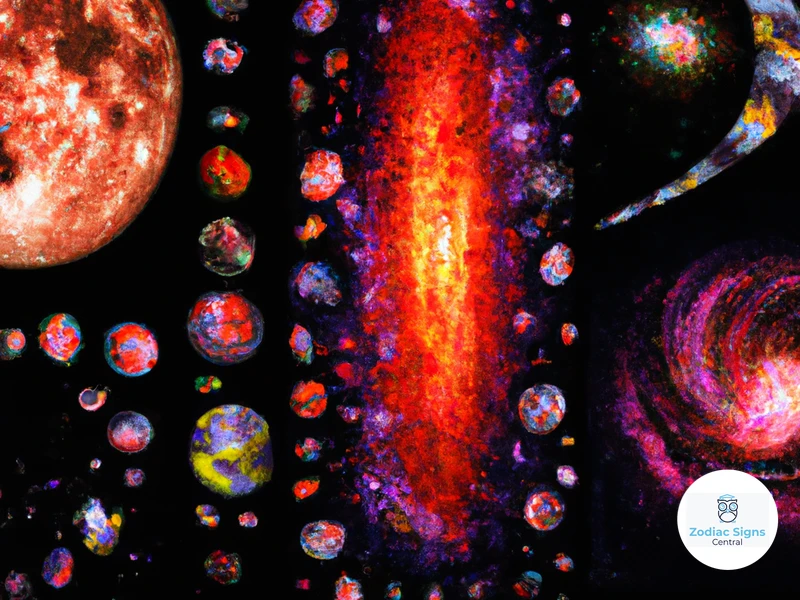
Aspects play a vital role not only in understanding our natal charts but also in deciphering the influences of planetary transits. In natal charts, aspects reveal the energetic connections and dynamics between planets at the moment of our birth. These aspects provide valuable insights into our personality traits, strengths, and potential challenges. By analyzing the aspects in our natal charts, astrologers can uncover the unique patterns and themes that shape our lives. On the other hand, when it comes to transits, aspects refer to the current positions of the planets in relation to our natal chart. As planets move and interact with the planets in our natal chart, they form new aspects that influence our experiences and events in real-time. Understanding the transit aspects allows us to anticipate and navigate the energies and opportunities that come our way. Whether it’s exploring the intricate connections within our natal charts or interpreting the influences of transits, aspects hold the key to deeper self-awareness and guidance on our life’s journey.
1. Natal Aspects
Natal aspects, also known as birth chart aspects or planetary aspects, refer to the angles formed between planets at the moment of an individual’s birth. These aspects play a crucial role in shaping a person’s personality traits, strengths, and challenges throughout their life.
When analyzing natal aspects, astrologers examine the relationships between various planets in the birth chart. Each aspect carries its own unique energy and symbolism, influencing different aspects of an individual’s character and life experiences.
For example, a conjunction between the Sun and Mercury in the birth chart can indicate a person who possesses excellent communication skills and a lively intellect. This aspect suggests a blending of the qualities associated with the Sun (confidence, self-expression) and Mercury (communication, intelligence), resulting in a person who excels in written or verbal expression.
On the other hand, a square aspect between Mars and Saturn may indicate a combination of assertiveness and discipline but also the potential for internal conflicts or frustrations. This aspect suggests that the individual may face challenges in finding the right balance between taking action (Mars) and exercising caution (Saturn). It could manifest as a tendency to work hard but also feel limited by self-imposed restrictions.
Additionally, other aspects such as trines, oppositions, sextiles, and quincunxes contribute further nuances to a person’s natal chart interpretation. Astrologers consider the orbs, or the degrees of separation between planets, when determining the strength and influence of each aspect.
Understanding natal aspects can provide deep insights into an individual’s core personality traits, talents, and potential challenges. By recognizing and embracing these aspects, individuals can gain a greater awareness of their inherent strengths and areas for personal growth. Natal aspects help guide individuals on their journey of self-discovery, allowing them to navigate life’s twists and turns with a sense of purpose and alignment.
2. Transit Aspects
Transit aspects play a vital role in astrology as they provide valuable information about the current energies and influences affecting an individual’s life. When we talk about transit aspects, we refer to the angles formed between the planets in the sky and the planets in an individual’s natal chart. These aspects depict the ongoing interactions between the celestial bodies and offer insights into the timing and themes of various events and experiences in one’s life.
Transit aspects are dynamic and ever-changing, constantly shifting as the planets continue their celestial dance. When a transit aspect occurs, it can activate the energies of the corresponding natal planets, triggering various effects in an individual’s life.
For example, let’s consider a transit aspect between Jupiter and Mars. Jupiter represents expansion, growth, and opportunities, while Mars symbolizes action, energy, and assertiveness. When these two planets form a harmonious aspect, such as a trine or sextile, it can indicate a period of increased motivation, enthusiasm, and success. This transit aspect may bring about favorable circumstances, allowing individuals to seize opportunities and make progress in their endeavors.
On the other hand, challenging transit aspects, such as squares or oppositions, can present obstacles and difficulties. For instance, if Saturn forms a square aspect to one’s natal Venus, it could signify a period of emotional or romantic challenges, limitations in relationships, or a need for sincere self-reflection.
It is important to note that the influence of transit aspects varies depending on the individual’s natal chart and the specific planetary configuration involved. The astrologer carefully analyzes the transit aspects and their connections with the natal chart to provide insights into the potential themes and events that may arise during a specific transit period.
By understanding and working with transit aspects, individuals can gain awareness of the cosmic energies at play in their lives. Astrologers can guide individuals in harnessing the positive opportunities offered by harmonious aspects and navigating the challenges presented by challenging aspects. Thus, transit aspects provide a valuable tool for astrological forecasting and can assist individuals in making conscious choices aligned with the celestial energies surrounding them. So, explore the ever-changing dynamics of transit aspects and unlock a deeper understanding of the cosmic influences shaping your existence.
3. Progressed Aspects
Progressed aspects, also known as secondary progressions, are a unique and advanced technique in astrology used to analyze the evolving energies and influences in a person’s life over time. Unlike natal aspects that are present at the time of birth, progressed aspects take into account the movements of the planets after birth. These aspects reflect the gradual unfolding of a person’s potential and the changing dynamics of their experiences.
Here are some key points to understand about progressed aspects:
1. Progressed Chart: In the process of calculating progressed aspects, a secondary chart is constructed based on the movement of the planets, usually using a day-for-a-year progression. This means that each day after birth corresponds to one year in the progression chart. The progressed chart acts as a snapshot of the energies and influences at any given point in a person’s life.
2. Slow-Paced Energies: Progressed aspects represent the slower-moving energies that unfold over a longer period of time, unlike the fast-paced transits that occur on a daily or monthly basis. As a result, progressed aspects provide a broader understanding of an individual’s life trends and long-term patterns.
3. Inner Growth and Development: Progressed aspects offer insights into a person’s inner growth, maturation, and evolving potentials. They reveal the shifts and changes in an individual’s psychological and emotional landscape, presenting opportunities for personal development and self-awareness.
4. Triggers and Life Events: Progressed aspects can indicate significant life events or key turning points in a person’s life. They can coincide with major life transitions, career changes, relationship developments, or other important milestones.
5. Understanding Life Phases: Progressed aspects help astrologers identify the different phases and chapters of a person’s life journey. By analyzing the patterns and themes indicated by these aspects, astrologers can offer guidance on how to navigate and make the most of each life phase.
6. Synthesis with Natal Aspects: Progressed aspects do not replace natal aspects but provide an additional layer of insight. By comparing and synthesizing the natal and progressed aspects, astrologers can gain a more comprehensive understanding of a person’s evolving life story and the interplay between their foundation and growth.
Progressed aspects are a valuable tool in astrological analysis, providing a deeper understanding of the unfolding energies and influences in a person’s life. By incorporating progressed aspects into their interpretations, astrologers can offer more nuanced and accurate insights into the ongoing journey of self-discovery and personal evolution.
Aspects and Forecasting
Aspects in astrology play a crucial role in forecasting and predicting future events. By examining the angles formed between planets, astrologers can gain insights into the potential energies at play during certain periods of time. Predictive astrology utilizes various astrological techniques to forecast significant events and trends in a person’s life. The study of planetary movements, transits, and progressions allows astrologers to pinpoint specific times when certain aspects will be activated, influencing various aspects of life such as relationships, career, and personal growth. Timing significant events is a key aspect of forecasting, as astrologers analyze the planetary aspects to determine favorable or challenging periods. Additionally, the study of planetary patterns and clusters can offer a deeper understanding of the overarching energies affecting a person’s life during a specific period. By unraveling these cosmic clues, astrologers assist individuals in making informed decisions and navigating the ebb and flow of life.
1. Predictive Astrology
1. Predictive Astrology:
Predictive astrology is a branch of astrology that focuses on forecasting and predicting future events and trends based on the positions and movements of celestial bodies. Astrologers utilize various techniques to make astrological predictions, such as transits, progressions, and solar returns.
Transits: Transits involve analyzing the current positions of planets in relation to an individual’s natal chart. By studying the interactions between the transiting planets and the natal positions, astrologers can gain insights into the potential influences and shifts in a person’s life. Major transits such as the Saturn Return or Jupiter transit to important points in a chart can indicate important life events, personal growth, and challenges.
Progressions: Progressions involve advancing the positions of the planets in a natal chart over time. Progressed aspects and planetary movements offer a deeper understanding of long-term trends and developmental stages in a person’s life. Progressions can reveal important turning points, career shifts, or relationship changes.
Solar Returns: A solar return chart is calculated for the exact moment when the Sun returns to its exact natal position. This chart provides insights into the themes and influences for the upcoming year. It offers guidance on areas such as health, relationships, career, and personal development for the year ahead.
Astrologers also consider planetary cycles, such as the Saturn cycle (which occurs approximately every 28-30 years). These cycles mark significant milestones and periods of growth and transformation in a person’s life.
Predictive astrology gives individuals a glimpse into the potential opportunities, challenges, and patterns that may arise in the future. It is important to note that astrology does not provide definitive predictions but rather offers guidance based on the energetic influences at play. It serves as a tool for self-reflection, helping individuals make informed decisions and navigate life’s uncertainties.
By understanding the principles of predictive astrology, individuals can gain a deeper understanding of their life’s unfolding journey. Whether seeking insights into career prospects, relationship developments, or personal growth, predictive astrology provides a valuable framework for navigating the evolving cosmic energies. So, embrace the cosmic dance of prediction and let astrology be your guide on the path of self-discovery.
2. Timing Significant Events
Timing significant events is an integral aspect of astrology, allowing astrologers to predict and anticipate important milestones or challenges in an individual’s life. Through the study of transits and progressions, astrologers can determine the ideal times when certain events are more likely to occur.
Transit aspects involve the movement of the planets in real-time, creating dynamic interactions with the planets in an individual’s natal chart. These transits can activate dormant energies or bring about new opportunities and experiences. For example, a transit of Jupiter over the natal Sun can signify a period of expansion, abundance, and personal growth. Similarly, a transit of Saturn to the natal Moon may bring about a period of emotional maturation and responsibility.
Progressions involve a symbolic movement of the natal chart over time, indicating the internal evolution and growth of an individual. Progressed aspects signify important shifts and developments in one’s life. For instance, a progressed Sun square Saturn may indicate a time of personal challenges and overcoming obstacles through discipline and perseverance. Progressed aspects provide valuable insights into the timing and nature of significant life events.
Timing significant events through astrological aspects goes beyond mere predictions. It allows individuals to navigate life’s challenges and make informed choices during pivotal moments. By understanding the cosmic influences at play, one can align their actions and decisions with the prevailing energies, maximizing opportunities and minimizing potential obstacles.
Astrologers use a variety of techniques to discern the timing of significant events. They analyze the orbs, which determine the allowable range of degrees for an aspect to be considered active. Tighter orbs indicate stronger and more immediate influences, while wider orbs suggest more subtle or longer-lasting effects. Additionally, the nature of the aspect itself, whether it is harmonious or challenging, can provide insights into the nature and timing of events.
Astrology is a powerful tool for understanding the intricate interplay of cosmic energies and their impact on our lives. By exploring the timing of significant events through astrological aspects, we can gain a deeper understanding of the unfolding patterns and rhythms that shape our personal journeys. So, let’s continue our exploration of the enriching role of aspects in astrology and uncover the fascinating ways in which they influence our lives.
3. Planetary Patterns and Clusters
Planetary patterns and clusters refer to the arrangement and grouping of planets within an astrological chart. These patterns offer deeper insights into the dynamics and themes at play in an individual’s life. Astrologers analyze these patterns to understand the interplay between the planets and how they collectively influence a person’s personality, experiences, and life events. Let’s explore some of the common planetary patterns and clusters:
Grand Trine: A Grand Trine occurs when three planets form an equilateral triangle within the chart. This pattern suggests a harmonious flow of energy between the planets involved, creating a sense of ease and natural talent in the related areas of life. Individuals with a Grand Trine may possess innate gifts or abilities in these areas, but they must also be mindful of becoming too comfortable and missing opportunities for growth.
Stellium: A Stellium refers to a cluster of three or more planets grouped closely together in the same zodiac sign or house. This concentration of planetary energy amplifies the influences and significance of these planets in a person’s life. Stelliums can indicate areas of intense focus, passion, or even challenges, depending on the planets involved.
T-Square: A T-Square forms when three planets create a right triangle within the astrological chart. This pattern represents a dynamic and challenging energy, as two planets form an opposition, with a third planet making a square to both of them. T-Squares often indicate areas of tension, conflict, and intense drive for growth and change in a person’s life.
Yod: Also known as the “Finger of God,” the Yod is a pattern that involves two planets in sextile aspect (60 degrees) and both forming a quincunx aspect (150 degrees) to a third planet. This pattern indicates a fated or karmic energy, often associated with a significant life purpose or turning point. Individuals with a Yod in their chart may experience periods of intensity, challenge, and spiritual growth.
These planetary patterns and clusters add layers of complexity to the interpretation of aspects in astrology. They reveal the interconnections and themes within a person’s chart that shape their life experiences and personal development. By understanding and working with these patterns, astrologers can provide valuable insights and guidance to individuals seeking a deeper understanding of themselves.
As we continue our exploration of astrology, we will dive further into the role of aspects, patterns, and clusters in forecasting, compatibility, and predictive techniques. These cosmic connections unraveled through astrology help us navigate the cosmic dance of life and understand our place in the larger universal web.
Aspects and Compatibility
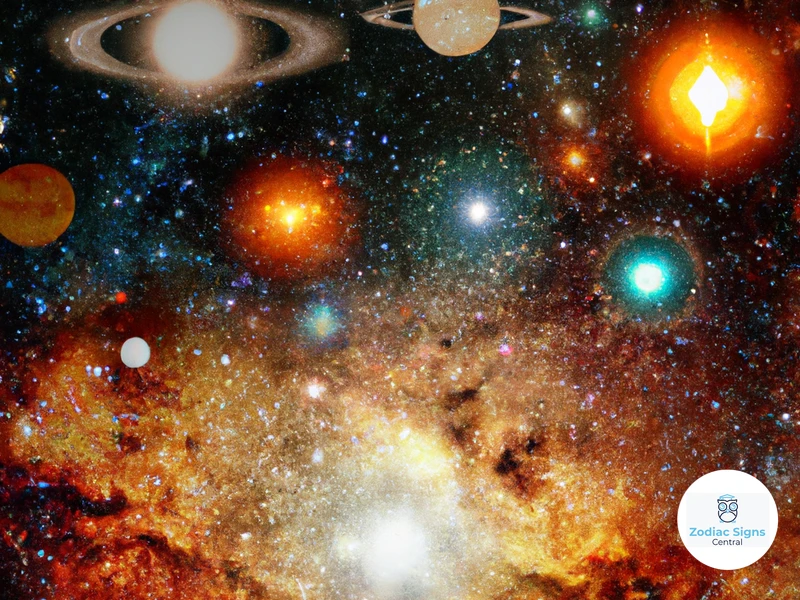
Aspects play a crucial role in determining compatibility in astrology, as they illuminate the dynamics between individuals and reveal the potential areas of harmony or challenges within relationships. When analyzing compatibility, astrologers examine the aspects formed between the planets in each person’s birth chart. These aspects provide valuable insights into the energy exchange and compatibility between individuals. Harmonious aspects, such as trines and sextiles, indicate an easy and flowing connection, fostering understanding and cooperation. On the other hand, challenging aspects, such as squares and oppositions, can highlight areas of tension and potential conflict that may require efforts to overcome. By assessing the aspects in a synastry chart or composite chart, astrologers can gain a deeper understanding of relationship patterns, strengths, and areas that may need attention or adaptation. So, let’s explore further the role of aspects in compatibility and discover how the celestial energies influence our connections with others.
1. Synastry Aspects
Synastry aspects play a crucial role in analyzing the compatibility and dynamics between two individuals in astrology. These aspects focus on the connections formed between the planets in one person’s chart and those in another person’s chart. By comparing the placements and aspects between the planets in both charts, astrologers gain insights into the strengths, challenges, and overall compatibility of a relationship.
Some key synastry aspects to consider include:
Conjunctions: When planets in one person’s chart align closely with planets in the other person’s chart, a conjunction is formed. These aspects highlight areas of similarity, shared goals, and potential for a strong connection.
Oppositions: Oppositions occur when planets in one person’s chart are directly opposite planets in the other person’s chart. This aspect represents a dynamic push and pull between two individuals, bringing both attraction and potential conflict.
Trines and Sextiles: Harmonious aspects like trines and sextiles indicate ease and compatibility between two individuals. Trines occur when planets in one chart form an angle of approximately 120 degrees with planets in the other chart, while sextiles occur at an angle of about 60 degrees. These aspects signify a natural flow of energy and can contribute to a sense of mutual understanding and support in a relationship.
Squares and Quincunxes: Challenging aspects like squares and quincunxes highlight areas of tension and potential growth between individuals. Squares occur when planets in one chart form an angle of approximately 90 degrees with planets in the other chart, while quincunxes occur at an angle of around 150 degrees. These aspects may indicate areas where conflicting needs or different approaches can arise, requiring understanding and compromise.
Planetary Contacts: In addition to the aspects mentioned above, it’s also important to consider direct contacts between specific planets in both charts. For example, if one person’s Moon aligns with the other person’s Sun, it suggests a deep emotional connection and potential compatibility.
When analyzing synastry aspects, it’s crucial to consider the overall balance of challenging and harmonious aspects. A mix of supportive and challenging connections can create a dynamic and fulfilling relationship, as growth and transformation often occur through overcoming obstacles. Understanding the synastry aspects in a relationship can provide valuable insights into the potential for compatibility and the areas that may require attention and compromise.
Remember, astrology is a complex and multidimensional practice, and synastry aspects are just one piece of the puzzle when it comes to understanding relationships. For a more comprehensive analysis, it’s essential to consider other factors such as the houses, signs, and overall planetary placements in both charts. So, let’s continue our astrological exploration and unravel the intricate connections between individuals through the study of synastry aspects.
2. Composite Aspects
Composite aspects serve as a vital tool in analyzing compatibility and understanding the dynamics of a relationship. They are calculated by creating a composite chart, also known as a relationship or couple’s chart, which combines the birth charts of two individuals into one composite chart.
When looking at composite aspects, we examine the angles formed between the planets, points, and houses in the composite chart. These aspects indicate the areas of harmony, tension, and mutual influence within the relationship. Composite aspects offer valuable insight into the shared experiences, challenges, and growth opportunities that the couple may encounter throughout their journey together.
Let’s explore some key composite aspects:
Conjunctions: Conjunctions in a composite chart indicate a strong bond and shared traits between the individuals. This alignment fosters a deep connection and understanding between partners.
Oppositions: Oppositions signal a dynamic tension within the relationship, as two opposing forces or needs encounter each other. These aspects highlight the potential for growth and learning through compromise and understanding.
Trines and Sextiles: Harmonious aspects such as trines and sextiles facilitate ease and flow of energy between the individuals. These aspects promote compatible and supportive dynamics within the relationship.
Squares: Square aspects bring challenges and friction into the relationship. They symbolize areas where conflicts may arise, requiring open communication, compromise, and growth to overcome obstacles.
Composite aspects provide a holistic understanding of the dynamics within a relationship. They reveal the strengths, weaknesses, and growth potential that can be achieved through mutual understanding and cooperation.
By analyzing composite aspects, astrologers can offer guidance and insights into the dynamics of the relationship. It can help couples navigate challenges, understand each other’s needs, and work towards creating a more harmonious and fulfilling connection.
Remember, while composite aspects offer valuable information, the overall compatibility and success of a relationship depend on various factors, including individual charts, personal development, and communication. Utilizing composite aspects as a tool for self-awareness and understanding can contribute to building healthier and more fulfilling partnerships.
3. Aspects in Relationship Challenges
Relationships can be both beautiful and challenging, and astrology provides valuable insights into the dynamics within partnerships. Aspects play a crucial role in understanding the challenges that may arise between individuals in relationships. When certain aspects form between the planets in two people’s charts, it can indicate areas of tension, conflict, or difficulty. These aspects shed light on the potential hurdles and lessons that couples may encounter in their journey together.
One example of challenging aspects in relationships is the square aspect. A square occurs when two planets are approximately 90 degrees apart in the astrological chart. This aspect represents tension, friction, and conflicting energies between the individuals involved. In a relationship, squares can manifest as power struggles, disagreements, or a clash of personalities. However, it’s important to note that squares also offer opportunities for growth, as they push individuals to confront their differences and find constructive ways to resolve conflicts.
Another aspect that can present challenges in relationships is the opposition. An opposition occurs when two planets are directly opposite each other in the chart, creating a dynamic of polarity and duality. This aspect can bring about a strong attraction between two people, but it can also generate a sense of push-pull or conflicting desires. Opposing energies can lead to power imbalances, compromises, or a struggle for dominance in the relationship. However, with awareness and conscious effort, oppositions can be navigated to find a balance where both partners can merge their individual strengths and create a harmonious union.
Additionally, quincunxes, also known as inconjuncts, can present relationship challenges. A quincunx occurs when two planets are approximately 150 degrees apart, creating a sense of tension and adjustment. In a partnership, this aspect can manifest as a feeling of awkwardness, misalignment, or a need for adaptation. Quincunxes can highlight areas where both individuals may have to make sacrifices or compromises to maintain harmony in the relationship.
While challenging aspects in relationships can pose obstacles, they also offer opportunities for growth and deeper connection. They provide a chance for individuals to learn from one another, develop greater understanding and empathy, and cultivate compromise and flexibility. By recognizing and working through these challenging aspects, couples can build stronger foundations and develop a more fulfilling and resilient partnership.
It’s important to remember that no relationship is defined solely by its challenging aspects. A comprehensive analysis of the entire astrological chart, including the harmonious aspects, can provide a more holistic understanding of the dynamics within a relationship. By recognizing and embracing the lessons and growth potential presented by challenging aspects, couples can navigate through relationship challenges with greater understanding and create enduring bonds of love and support.
Astrological Aspect Patterns
Astrological aspect patterns provide a deeper layer of complexity and meaning to astrology, unveiling intricate connections between multiple planets in a chart. These patterns arise when three or more planets align in specific geometric configurations, adding depth and nuance to the interpretation. One common aspect pattern is the stellium, where three or more planets gather closely together in the same sign or house, amplifying their combined energies and highlighting a specific area of focus in a person’s life. Another significant pattern is the grand trine, formed when three planets create an equilateral triangle in the chart, indicating ease, talents, and flow of energy in particular elements or modalities. The T-square, formed by two planets in opposition with a third planet at a right angle to both, symbolizes challenges, conflicts, and potential growth areas. Lastly, the yod, or “Finger of God,” is a rare and potent configuration that points to a pivotal life mission or turning point, requiring a unique balancing act. These aspect patterns provide deeper insights into an individual’s personality, life themes, and potential areas of growth and transformation. So, let’s unravel the secrets of these dynamic aspect patterns and their significance in astrology’s cosmic tapestry.
1. Stelliums
1. Stelliums:
A stellium is a powerful configuration in astrology where three or more planets are tightly grouped together in the same zodiac sign or house. This concentrated energy creates a significant influence and amplifies the qualities associated with the sign or house involved. Stelliums are known to have a profound impact on a person’s life and can shape their personality traits, strengths, and challenges.
When a stellium occurs in a birth chart, it shows a concentration of energy in a specific area of life. For example, a stellium in the 10th house, which represents career and public image, can indicate a strong drive and focus on professional success. The individual may have a natural talent and an intense desire to achieve recognition and authority in their chosen field.
The sign in which the stellium occurs also adds a unique flavor to its influence. For instance, a stellium in Taurus may emphasize stability, material possessions, and determination, while a stellium in Scorpio may signify intensity, transformation, and deep emotional connections.
The impact of a stellium can be both positive and challenging. On the positive side, it grants individuals with a strong and unwavering dedication to the area of life influenced by the stellium. They may possess exceptional skills or talents related to the planets involved, giving them a competitive edge and potential for exceptional success.
However, the concentrated energy of a stellium can also present challenges. Individuals with a stellium may feel overwhelmed by the intensity of the energies involved or struggle to find balance in other areas of life. For some, the all-consuming drive in the stellium area can lead to neglecting other important aspects of life, such as relationships or self-care.
Stelliums bring a potent and distinct energy to a person’s life, shaping their experiences, strengths, and challenges. Understanding the influence of a stellium in a birth chart allows individuals to harness its power and navigate its impact more consciously. So, if you have a stellium in your chart, get ready to embrace and explore the rich complexities it brings to your life journey.
2. Grand Trines
2. Grand Trines in astrology are considered to be powerful and harmonious aspects that form an equilateral triangle in a person’s birth chart. They occur when three planets are approximately 120 degrees apart from each other, creating a flow of positive energy and ease.
Grand Trines indicate a natural and effortless expression of the energies associated with the planets involved. This aspect is often associated with innate talents, gifts, and abilities that come effortlessly to the individual. It suggests a sense of flow and harmony in the areas of life represented by the participating planets.
When a Grand Trine is present in a birth chart, it signifies a harmonious alignment of energies, resulting in the smooth integration of attributes and influences. This aspect brings a sense of ease, creativity, and manifestation. Individuals with Grand Trines may experience a certain degree of good luck or favorable circumstances in the areas related to the participating planets.
However, it’s important to note that while Grand Trines can be beneficial, they can also lead to complacency or a lack of motivation. The harmonious nature of this aspect may sometimes result in a tendency to take things for granted or rely too heavily on natural talents, without putting in the necessary effort.
To make the most of a Grand Trine, it’s essential for individuals to actively engage with the energies and potentials represented by the planets involved. By consciously harnessing and directing the harmonious flow, individuals can maximize their potential and utilize the benefits offered by this aspect.
It’s worth mentioning that a Grand Trine can occur in different elements (fire, earth, air, or water), each providing unique qualities and expressions. For example, a Grand Trine in fire signs can enhance creativity, passion, and leadership abilities, while a Grand Trine in earth signs can enhance practicality, stability, and material success.
Grand Trines in astrology signify a powerful and harmonious flow of energies between three planets, indicating a natural talent or ease in certain areas of life. While this aspect brings many advantages, it’s essential to remain proactive and consciously engage with the energies to make the most of the potentials offered. So, if you are fortunate enough to have a Grand Trine in your birth chart, embrace it as a source of strength and inspiration as you navigate your life’s journey.
3. T-Squares
3. T-Squares:
A T-Square is a complex aspect pattern in astrology that consists of two planets in opposition (180 degrees) with a third planet forming a square (90 degrees) to both of them. This creates a shape that resembles a capital letter “T” hence the name T-Square. It is considered to be a challenging aspect pattern that brings tension and conflict, but also immense potential for growth and transformation.
The planetary energies involved in a T-Square interact in a way that requires balancing and integrating conflicting qualities. The two planets in opposition represent opposing forces within a person’s psyche or external circumstances. The planet forming the square acts as a focal point, intensifying the tension and creating a powerful driving force for change.
A T-Square can manifest in different areas of life, depending on the specific planets and houses involved. The house placement of the focal planet indicates the area of life where the tension is most prominent, while the planets in opposition show the conflicting energies at play.
For example, if a person has a T-Square involving Mars in opposition to Saturn, with the focal planet being Pluto, it suggests a struggle between assertiveness (Mars) and restriction (Saturn) with a driving force for transformation (Pluto). This individual may experience intense conflicts between their desire for independence and their fear of authority, leading to a need for personal growth and empowerment.
Resolving the challenges posed by a T-Square requires acknowledging and integrating the opposing energies involved. It often involves a process of self-reflection, self-awareness, and finding a balanced approach that harmonizes the conflicting forces. By embracing the tension and actively working towards finding a resolution, individuals with T-Squares can unlock their potential for personal growth and transformation.
A T-Square is a complex aspect pattern in astrology that brings tension and challenges, but also the opportunity for growth and transformation. By understanding the conflicting energies and working towards integrating them, individuals can navigate the complexities of a T-Square and harness its power for personal development. So, let us dive deeper into the intricate world of aspect patterns and uncover more about their influence in astrology.
4. Yods
Yods, also known as the “finger of fate” or the “finger of God,” are a unique and rare aspect in astrology. This aspect occurs when two planets form a sextile aspect (approximately 60 degrees apart) to a third planet, which is then quincunx (approximately 150 degrees) to both of the sextile planets. The resulting configuration creates a narrow and elongated triangle shape, resembling a pointing finger.
Yods are considered highly significant and often bring transformative and fated energy to a person’s life. This aspect suggests a karmic mission or purpose that the individual is meant to fulfill. Yods propel individuals towards personal growth, spiritual awakening, and the fulfillment of their soul’s journey.
When analyzing a Yod in an astrological chart, astrologers consider the planets involved and the houses they are placed in. The sextile planets act as a harmonious combination of energies, working together to support the focal planet. The focal planet, being the apex of the triangle, represents the area where the individual experiences challenges, intense growth, and a sense of destiny.
Yods are often associated with a heightened sense of intuition and spiritual awareness. Individuals with a Yod in their chart may feel a deep sense of purpose or a calling to a specific path or mission in life. They may encounter unusual or unexpected circumstances that catapult them towards their destiny and spiritual evolution.
Though Yods can bring profound opportunities for growth, they can also present challenges. Individuals with a Yod may feel a sense of internal tension and struggle as they navigate their unique path. The lessons and growth associated with Yods often require internal shifts, adjustments, and a willingness to embrace change and transformation.
Yods represent a powerful and dynamic aspect in astrology, guiding individuals towards their true purpose and destiny. They remind us that there is a higher plan at work in our lives and encourage us to trust the journey, even when faced with challenges. So embrace the cosmic pointing finger of the Yod and allow it to lead you towards your ultimate spiritual evolution and fulfillment.
The Role of Aspects in Predictive and Mundane Astrology

Astrological aspects play a crucial role in predictive and mundane astrology, offering valuable insights into future events and worldly matters. In predictive astrology, aspects provide a foundation for forecasting significant life events and understanding the timing of these events. Astrologers analyze the planetary alignments and angles to anticipate periods of growth, challenges, and opportunities. By studying transits and progressions, astrologers can map the movement of celestial bodies in relation to an individual’s birth chart, providing a roadmap for potential developments in their life. In mundane astrology, aspects shed light on global events and societal trends. Astrologers examine the aspects between planets to gain insights into geopolitical shifts, economic fluctuations, and cultural shifts. By understanding the role of aspects in predictive and mundane astrology, we can uncover the powerful predictive and storytelling capabilities of this cosmic language.
1. Mundane Astrology
Mundane astrology is a branch of astrology that focuses on the study of world events and the predictions of trends on a global scale. It involves analyzing the positions and aspects of planetary bodies to gain insights into societal movements, political developments, natural disasters, and other significant events that affect humanity as a whole. Mundane astrologers interpret these celestial configurations to forecast the potential outcomes and influences that may impact countries, regions, and even the global community.
Within the realm of mundane astrology, there are several key techniques and approaches used:
Astrological Ingresses: Ingress charts are created for the precise moment when a planet enters a new sign or a significant event occurs, such as the Sun’s entry into Aries marking the start of the astrological new year. These charts provide insights into the overarching themes and tendencies that may shape global affairs and societal shifts.
Planetary Cycles: The study of planetary cycles allows mundane astrologers to understand the recurring patterns of planetary movements and their correlation with historical events. For example, the Saturn-Pluto cycle, which occurs approximately every 33 to 38 years, has been associated with periods of intense transformation and societal restructuring.
Eclipses: Solar and lunar eclipses hold significant importance in mundane astrology. These celestial events are seen as triggers for significant shifts and turning points in society. The houses and aspects activated by an eclipse can offer valuable information about the areas of life most affected and the potential outcomes of these transformative periods.
Planetary Alignments: The alignment of multiple planets, known as a planetary configuration or conjunction, can have a profound impact on global affairs. Mundane astrologers closely observe these alignments as they can indicate times of heightened tension, conflict, or major shifts in collective consciousness.
By analyzing these various astrological techniques and their application to world events, mundane astrologers aim to provide insights into the potential trends, challenges, and opportunities that may arise on a global scale. This branch of astrology serves as a valuable tool for understanding the dynamics and interplay between celestial energies and human society, helping us navigate and prepare for the collective experiences that shape our world. So, let us continue our exploration of the vast cosmic tapestry as we uncover more about the role of aspects in predictive and mundane astrology.
2. Predictive Techniques
Predictive techniques are an integral part of astrology that help astrologers forecast future events and trends based on the positioning and interactions of celestial bodies. These techniques enable astrologers to provide insights into potential outcomes and timelines for significant life events. As we explore the realm of predictive astrology, we encounter various methods and tools that aid in this process.
Transits: Transits involve analyzing the current positions of planets in relation to an individual’s natal chart. By examining how the current planetary movements impact the natal positions, astrologers can make predictions about the potential influences on a person’s life. Transits can indicate times of opportunity, challenges, or significant shifts in various areas such as relationships, career, and personal growth.
Progressions: Progressions involve advancing the positions of planets in the natal chart based on a symbolic method that corresponds to the passage of time. These progressed positions reflect personal evolution and inner growth. Progressed aspects and planetary movements provide insights into an individual’s long-term developmental patterns and potential life themes.
Solar Returns: A Solar Return chart is calculated for the exact moment when the Sun returns to its natal position, indicating the individual’s birthday for that year. This chart provides insights into the predominant themes and energies that will influence the individual’s upcoming year. Astrologers analyze the aspects and planetary placements in the Solar Return chart to gain insights into the major areas of focus, challenges, and potential opportunities for the year ahead.
Secondary Progressions: Secondary progressions involve advancing the positions of planets in the natal chart based on a symbolic method where one day represents one year of life. This technique provides a detailed look at individual growth and self-development over time. By examining the progressed positions of planets and their aspects, astrologers gain insights into significant life events and shifts in consciousness.
Timing Techniques: Timing techniques such as planetary transits, progressions, and solar arcs help astrologers pinpoint specific timeframes for significant events. These techniques involve analyzing the interactions and alignments of planetary positions as they relate to the natal chart. By assessing the timing of these aspects, astrologers can provide more accurate predictions regarding when certain events or life changes are likely to occur.
These predictive techniques offer invaluable tools for astrologers to give individuals a glimpse into what the future may hold. However, it’s important to remember that astrology does not provide a deterministic view of life. It offers guidance and insights into potentials and influences, allowing individuals to make more informed decisions and navigate their life paths with a deeper understanding of the cosmic energies at play. So, let’s continue our exploration of the role of aspects in astrology and uncover how they can shed light on the potential outcomes and timing of significant life events.
3. Astrological Forecasting
Astrological forecasting is a powerful tool that allows astrologers to predict and anticipate future events and trends by examining the movement and interactions of celestial bodies. By analyzing the aspects formed between planets and other significant points in the sky, astrologers can provide valuable insights into the potential outcomes and influences that may manifest in a person’s life.
Here are some key aspects of astrological forecasting:
1. Timing Significant Events: Astrologers use aspects to determine the timing of significant events in a person’s life. By tracking the transits (current positions) of planets to the natal positions in an individual’s birth chart, astrologers can identify periods of heightened activity, opportunities, challenges, and transformative experiences. Aspects play a crucial role in pinpointing the exact timing of these events, allowing for more accurate predictions and guidance.
2. Planetary Patterns and Clusters: Astrologers also look for patterns and clusters of aspects in a chart to gain a deeper understanding of the overall astrological forecast. These patterns, such as stelliums, grand trines, T-squares, and yods, reveal specific dynamics and potentials in a person’s life. For example, a stellium may indicate a concentration of planetary energy in a particular house or zodiac sign, suggesting an area of life where significant developments are likely to occur.
3. Predictive Techniques: Astrological forecasting involves the use of various predictive techniques, such as progressions and solar returns. Progressed aspects consider the gradual movement of planets over time, reflecting the evolution and growth in a person’s life. Solar returns, on the other hand, analyze the aspects formed between the transiting planets and the position of the Sun at the time of an individual’s birthday, providing insights into the themes and experiences that may dominate the coming year.
Astrological forecasting is a valuable tool for gaining insight into potential life events and trends. While it does not provide concrete predictions or fixed outcomes, it offers guidance and understanding of the energies at play during a specific period. By recognizing the potential influences and challenges indicated by aspects, individuals can make informed decisions, harness opportunities, and navigate the future with greater clarity and insight.
So, whether you’re seeking guidance on personal matters, career choices, or relationship dynamics, astrological forecasting can provide invaluable insights to help you make sense of the cosmic patterns and energies influencing your life.
Conclusion
In conclusion, the role of aspects in astrology is crucial in unraveling the cosmic connections between the celestial bodies and our lives. Aspects provide valuable insights into the interplay of energies and influences that shape our personality traits, relationships, and life events. By understanding the different types of aspects, such as conjunctions, oppositions, trines, squares, sextiles, and quincunxes, we can interpret their strengths, harmonious or challenging nature, and distinguish between major and minor aspects. These insights help us navigate our identity, relationships, career choices, and challenges, providing a deeper understanding of ourselves and the world around us.
Whether we examine natal aspects or transit aspects, aspects in our charts offer profound insights into our unique makeup and the energetic climate of a given period. They assist us in forecasting significant events and timing crucial life occurrences. In the realm of compatibility, synastry and composite aspects shed light on the dynamics and challenges we may face in our relationships. Furthermore, the patterns formed by aspects, such as stelliums, grand trines, T-squares, and yods, add another layer to our astrological understanding.
From a predictive and mundane astrology standpoint, aspects guide us in analyzing and forecasting events on a personal and global scale. Mundane astrology enables us to understand the influence of planetary alignments on broader societal patterns, while predictive techniques enhance our ability to anticipate and prepare for significant life changes.
In conclusion, the study and interpretation of aspects in astrology provide us with a wealth of knowledge and understanding. By embracing the cosmic connections revealed through aspects, we can navigate life’s challenges, nurture relationships, and harness the potential within us. So, let us continue exploring the cosmic realm of astrology, opening ourselves to the wisdom of the stars, and unlocking the cosmic connections that shape our lives.
Frequently Asked Questions
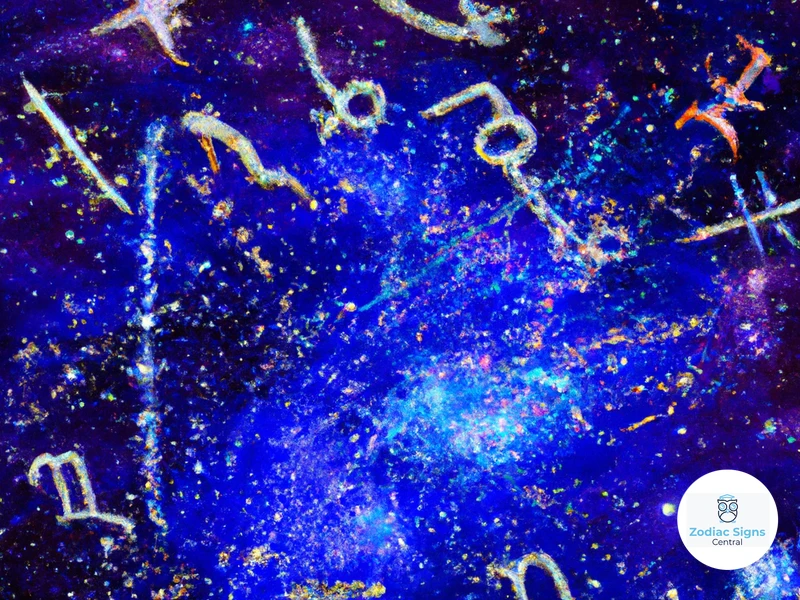
1. What is the significance of aspects in astrology?
Aspects in astrology reveal the dynamic connections and interactions between celestial bodies. They provide insights into the energies at play and the potential influences on an individual’s personality traits, relationships, and life events.
2. How do astrologers interpret aspects?
Astrologers interpret aspects by considering the geometry and angles formed between planets. They analyze the qualities of the planets involved, the nature of the aspect (harmonious or challenging), and the overall context of the individual’s chart to assess the potential impact on various aspects of life.
3. Can aspects change over time?
Aspects in a natal chart remain fixed, but transiting aspects (the positions of planets in the present) can influence and interact with natal aspects, creating different energies and opportunities. Progressed aspects also change slowly over time, reflecting personal growth and evolution.
4. Do all aspects have the same influence?
No, different aspects have varying levels of influence and significance. Some aspects, like conjunctions and oppositions, have a more intense and noticeable impact, while others, like sextiles and quincunxes, may be more subtle or require more effort for their energies to manifest.
5. Can aspects indicate compatibility between individuals?
Yes, aspects can provide valuable insight into compatibility in relationships. Harmonious aspects between key planets in two charts can indicate natural affinity, while challenging aspects may suggest areas of tension that can be worked on through understanding and compromise.
6. Can aspects predict specific events or outcomes?
While aspects can provide insights into the general energies and potentials, they do not provide specific predictions of events. Astrology is more about understanding patterns and influences rather than predicting precise details.
7. How long do transit aspects last?
Transit aspects can last for a few hours to several months, depending on the speed of the planets involved. Some aspects, like conjunctions, are more fleeting, while others, such as squares and oppositions, can have a more prolonged influence.
8. Can aspects indicate career paths and success?
Yes, certain aspects can provide indications of career potentials and success. Trines, for example, can signify ease and harmony in career pursuits, while squares may suggest challenges or the need for effort and growth in those areas.
9. Are some aspects considered more challenging or beneficial?
Yes, some aspects are generally considered more challenging, such as squares and oppositions, as they represent tensions and conflicts. Conversely, aspects like trines and sextiles are often seen as more beneficial, indicating ease and opportunities.
10. Can aspects change throughout the day?
Yes, the positions of planets constantly change throughout the day, resulting in different aspects being formed. This ongoing movement contributes to the ever-changing energies and influences that astrologers analyze to understand an individual’s chart.
References
Frequently Asked Questions

1. How do aspects in astrology impact a person’s personality traits?
Aspects in astrology influence a person’s personality traits by creating unique connections between planets in their birth chart. These connections can enhance or challenge certain traits, shaping an individual’s character.
2. What is the significance of harmonious and challenging aspects in astrology?
Harmonious aspects in astrology indicate easy flow and compatibility, while challenging aspects signify tension and growth opportunities. Both types play a crucial role in shaping an individual’s life experiences and personal growth.
3. How do aspects in astrology affect relationships and compatibility?
Aspects in astrology can reveal the compatibility and dynamics between two individuals. Positive aspects indicate harmony and support in relationships, while challenging aspects may highlight areas of tension or growth needed within the partnership.
4. Can aspects in astrology provide insights into career and success?
Absolutely! Aspects in astrology can shed light on a person’s potential career paths, strengths, and challenges. They can offer guidance on career choices, work relationships, and even success in different endeavors.
5. Are aspects in astrology responsible for challenges and obstacles in life?
Aspects in astrology can uncover potential challenges and obstacles that a person may face in their life. These aspects can provide insights into areas that need growth and development, ultimately leading to personal transformation.
6. How do natal aspects differ from transit aspects?
Natal aspects refer to the connections between planets at the time of someone’s birth, while transit aspects involve the current positions of planets and their interactions with the natal chart. Natal aspects represent a person’s inherent traits, while transit aspects reflect the influences of the present moment.
7. What is the role of aspects in predictive astrology?
Aspects in predictive astrology help astrologers forecast future events and trends. They indicate favorable and challenging periods, providing insights into when certain events or experiences are more likely to occur.
8. How are aspects used to determine compatibility in synastry astrology?
In synastry astrology, aspects between two individuals’ birth charts reveal the potential compatibility and dynamics of their relationship. Positive aspects indicate harmony, while challenging aspects may highlight areas of growth or tension.
9. What are some common astrological aspect patterns?
Popular astrological aspect patterns include stelliums (multiple planets in one sign or house), grand trines (three planets forming an equilateral triangle in the birth chart), T-squares (a pattern involving three planets in a challenging aspect), and yods (a rare triangular formation highlighting a major life theme).
10. How do aspects contribute to mundane astrology?
Aspects in mundane astrology help identify planetary alignments that affect society and major world events. They allow astrologers to make predictions about social, political, and economic trends and provide insights into collective energies and potential changes on a global scale.




